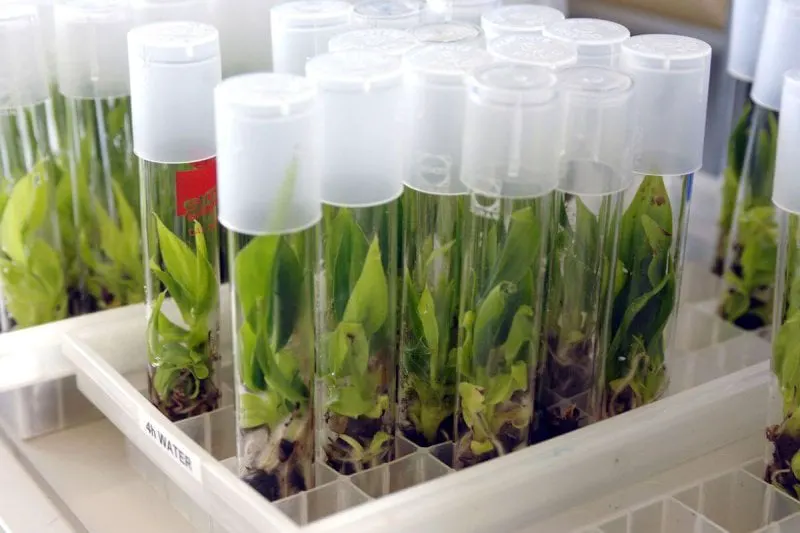Plant-breeding tool leaps major hurdle to enhancing more crops with CRISPR gene editing
Plant-breeding tool leaps major hurdle to enhancing more crops with CRISPR gene editing


Researchers know how to make precise genetic changes within the genomes of crops, but the transformed cells often refuse to grow into plants – one international team has devised a new solution.
The Dubcovsky lab at UC Davis in California, US, have developed a new tool helps ease this process by coaxing the transformed cells, including those modified with the gene-editing system CRISPR-Cas9, to regenerate new plants.
This new methodology is reported in Nature Biotechnology, shows that the technology, developed in wheat and tested in other crops significantly improves transformation success rates.
On the technology itself, Dr Dubcovsky, plant geneticist at UC Davis says, “The problem is that transforming a plant is still an art”.
The success rate of transformations is often low – depending on the crop being modified, 100 attempts may yield only a handful of green shoots that can turn into full-grown plants. The rest fail to produce new plants and die.
The system uses two genes that control development in many plants, to increase the formation of shoots in modified wheat, rice, citrus, and other crops.
The technology was tested in wheat at the John Innes Centre in our Crop Transformation platform prior to the publication of the work. Dr Sadiye Hayta tested the new chimeric protein and reported excellent results.
Dr Hayta says “I saw a dramatic increase in the transformation efficiency, from 33% to 77.5% in wheat cultivar Fielder. This technology opens the door to efficient transformations of a wider range of wheat varieties.”
Humans have worked to improve plants since the dawn of agriculture, selecting wild grasses to produce cultivated maize and wheat, for example. Nowadays, though, CRISPR has given researchers the ability to make changes to the genome with surgical precision. They have used it to create wheat plants with larger grains, generate resistance to fungal infection, design novel tomato plant architectures, and engineer other traits in new plant varieties.
Dr Hayta comments on this approach “It was fantastic study to have been involved in. To be able to test this new technology from another lab, before publication, and to feed our results into the paper was a fantastic piece of open, collaborative science.”
While UC Davis has a pending patent for commercial applications, the technique is available to any researcher who wants to use it for research, at no charge.
Read the original post

 | Videos | More... |

Video: Nuclear energy will destroy us? Global warming is an existential threat? Chemicals are massacring bees? Donate to the Green Industrial Complex!
 | Bees & Pollinators | More... |

GLP podcast: Science journalism is a mess. Here’s how to fix it

Mosquito massacre: Can we safely tackle malaria with a CRISPR gene drive?

Are we facing an ‘Insect Apocalypse’ caused by ‘intensive, industrial’ farming and agricultural chemicals? The media say yes; Science says ‘no’
 | Infographics | More... |

Infographic: Global regulatory and health research agencies on whether glyphosate causes cancer
 | GMO FAQs | More... |

Why is there controversy over GMO foods but not GMO drugs?

How are GMOs labeled around the world?

How does genetic engineering differ from conventional breeding?
 | GLP Profiles | More... |

Alex Jones: Right-wing conspiracy theorist stokes fear of GMOs, pesticides to sell ‘health supplements’




 Trust issues: What happens when therapists use ChatGPT?
Trust issues: What happens when therapists use ChatGPT? California, Washington, Oregon forge immunization alliance to safeguard vaccine access against federal undermining
California, Washington, Oregon forge immunization alliance to safeguard vaccine access against federal undermining Fighting deforestation with CO2: Biotechnology breakthrough creates sustainable palm oil alternative for cosmetics
Fighting deforestation with CO2: Biotechnology breakthrough creates sustainable palm oil alternative for cosmetics Viewpoint — Fact checking MAHA mythmakers: How wellness influencers and RFK, Jr. undermine American science and health
Viewpoint — Fact checking MAHA mythmakers: How wellness influencers and RFK, Jr. undermine American science and health 30-year-old tomato line shows genetic resistance to devastating virus
30-year-old tomato line shows genetic resistance to devastating virus The free-range chicken dilemma: Better for birds, but with substantial costs
The free-range chicken dilemma: Better for birds, but with substantial costs Viewpoint: Video — Big Solar is gobbling up productive agricultural land and hurting farmers yet providing little energy or sustainabilty gains
Viewpoint: Video — Big Solar is gobbling up productive agricultural land and hurting farmers yet providing little energy or sustainabilty gains ‘You have to treat the brain first’:Rethinking chronic pain with Sanjay Gupta
‘You have to treat the brain first’:Rethinking chronic pain with Sanjay Gupta
